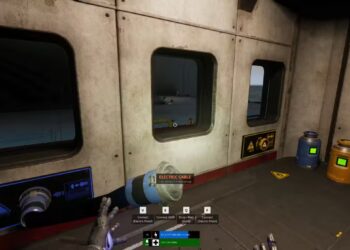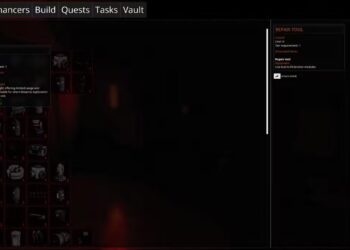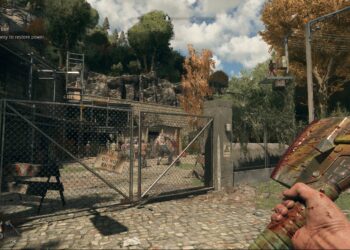Select Language:
Power is the most important resource in the game and managing it well is essential for survival and completing your mission. There are different types of power sources and ways to generate electricity. Here’s what you need to know to keep your power stable and your mission on track.
What Is Power, And Where Do You Find It?
Power is the key to everything. You need to supply energy to buildings, your spaceship, and yourself since you are a robot with a battery that constantly drains. As you explore, you’ll find several methods to generate power:
-
Batteries: These come in various sizes and can provide limited power to buildings or tools, as well as recharge your internal battery. Small batteries are consumable and used once; large ones can’t be moved and may be refillable.
ADVERTISEMENT -
Solar Power: Solar panels are scattered throughout the world and can also be crafted for your ship. Larger panels produce more electricity and work best during the day, especially on bright days. Some can store a small amount of energy to help during the night.
-
Wind Power: Wind turbines can be found or made, providing power at all times. Their output increases with wind strength, though unused power simply dissipates.
-
Electric Generators: These run on petrol, which can be found in tanks or created using a small generator that converts organic matter into fuel. They are useful for providing electricity in remote locations far from other power sources.
How To Keep Yourself Charged
You need to keep both your internal battery and vitality full to survive. On the screen, you’ll see two bars at the bottom center: blue for your battery and green for vitality. Keep both filled:
-
Internal Battery: This represents stamina and drains slowly even when idle. Performing actions like jumping, crafting, dismantling, or fighting drains it faster.
ADVERTISEMENT -
Vitality: This is your health. It drops when you are attacked or exposed to environmental hazards like falling.
If your battery runs out, your vitality will start to drain. When vitality hits zero, you are terminated and must restart from your last save.
How To Recharge Your Battery
Your battery is easiest to recharge by plugging into any power source. Make sure to have plenty of cables, many of which are lying around or can be crafted early in the game. Find a power source such as a battery, wind turbine, solar panel, or electrical outlet, then press E to connect a cable. Once connected, you can move slightly away and select “Connect (Self),” pressing E again to complete the charge.
When connected, blue lines will glow and move along the power line toward you, indicating charging. Power sockets usually default to output mode, sending power to what’s plugged in; switching to input mode by hovering over the socket and pressing F allows you to drain power from external sources. The equalize setting attempts to balance energy between sources.
How To Restore Vitality
Vitality is restored at healing stations, which are large white docking stations inside buildings and on your ship. These stations have an LCD screen marked “Vitality” with a green border and a green light above. To restore vitality, approach and press E to plug into the station. The cable will connect, and your vitality will be replenished. Many stations are placed near save points, allowing you to save your progress. The game autosaves, but manually saving after tough sections is recommended.
If vitality drops to zero, you are immediately terminated and must restart from your last save, even if your battery is full. Vitality acts as a buffer for power outages; without it, your robot is lost.
How To Power Your Ship
Powering your ship quickly is important because it provides a safe place and transportation. The best sources are wind turbines or solar panels, which you can craft and install on the decks. The ship’s electrical ports connect all modules, allowing you to input or output electricity. You can place generators wherever you want, provided they are not blocking modules. Solar panels and wind turbines should be outside to work efficiently.
How To Build Solar Panels And Turbines
You need to unlock the levels of solar panels and turbines at different points. Once unlocked, craft them at your fabricator:
-
Approach the fabricator and press E to open it. Scroll to modules, right-click the module you want, then choose “Add missing parts to queue” or “Add all parts to queue.” The module’s wiremesh will turn red if placement is blocked, green if possible.
-
Gather all required parts from storage, then stand by the blueprint to build. Use electric cables on the module’s port to connect it directly to your ship’s network or to cable extenders, which can connect multiple turbines into a single output.
It’s best to use natural generators often. You can run cables over long distances and connect multiple turbines or panels. Many outdoor spaces on your ship provide ideal locations for setup.
Managing the materials:
You don’t need to keep raw materials in your inventory constantly, but they should be nearby. Build large storage containers, store the raw items inside, and then transfer them to the fabricator as needed. You can also place blueprints for modules without materials; just approach and press E, then select the build option with the module highlighted in red if obstructed or green if clear.
Once you start building, attach cables from the module’s port to your ship’s power system. Use cable extenders, which allow linking multiple turbines or panels into a single cable for efficient power distribution. Run cables outside where panels and turbines are located.
How To Build Solar Panels and Wind Turbines
There are three levels of solar panels and wind turbines, which are unlocked with skill points:
Solar Panels:
- Lumilite (Tier 2): 1 skill point; Materials include a Solar Cell, Connector Ports, Alloy Frame.
- Lumimid (Tier 6): 2 skill points; Adds a Logic Chip and more alloy for increased capacity.
- Lumimax (Tier 13): 3 skill points; More parts for maximum efficiency and output.
Wind Turbines:
- Whisper (Tier 3): 1 skill point; Materials include a Turbine Blade, Connector Ports, Alloy Frame.
- Cyclone (Tier 8): 2 skill points; Improved components for better output.
- Typhoon (Tier 14): 3 skill points; Advanced parts for the highest power generation.
Materials for fabrication increase with higher-tier equipment. Basic power generators need plastics, iron, fabric, glass, and copper, whereas higher levels need silicon and aluminum for logic chips, and more advanced components for the top-tier options.
Are Electricity Generators Worth Crafting?
At level five, you can craft a small petrol-powered generator, which converts fuel (petrol) into electricity. It requires connector ports, alloy frame, coolant radiators, and a compression pump. These parts mostly match those used for turbines and panels but include additional polyurethane and a fuel supply.
To set up a petrol generator, craft a small fuel generator that needs connector ports, an alloy frame, compression pump, and filtering system. The materials are similar to other power options. Once assembled, connect the fuel port to your electricity generator’s input, and the output port feeds into your ship’s electrical network. You’ll also need a supply of bio-organic materials to produce petrol, which you can gather by defeating organic enemies or converting materials—a process more useful in late-game when organic matter is abundant.
Note that the electric generator emits carbon dioxide, which is easy to ignore outside, but indoors will require managing the emissions.







